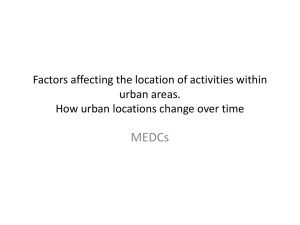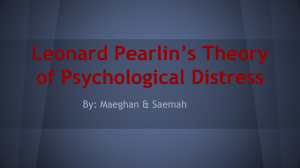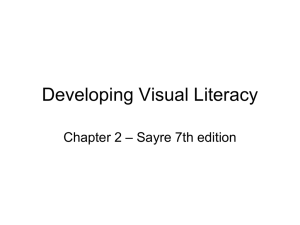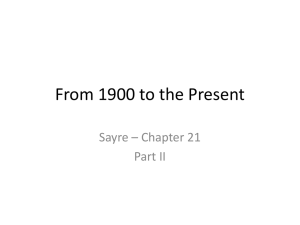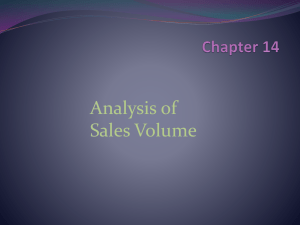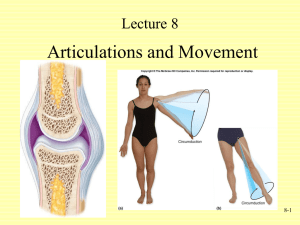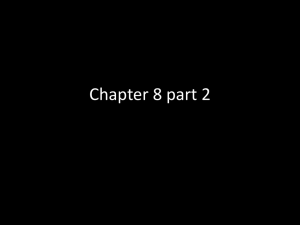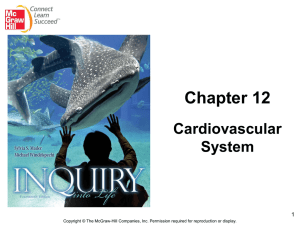please check your settings
advertisement
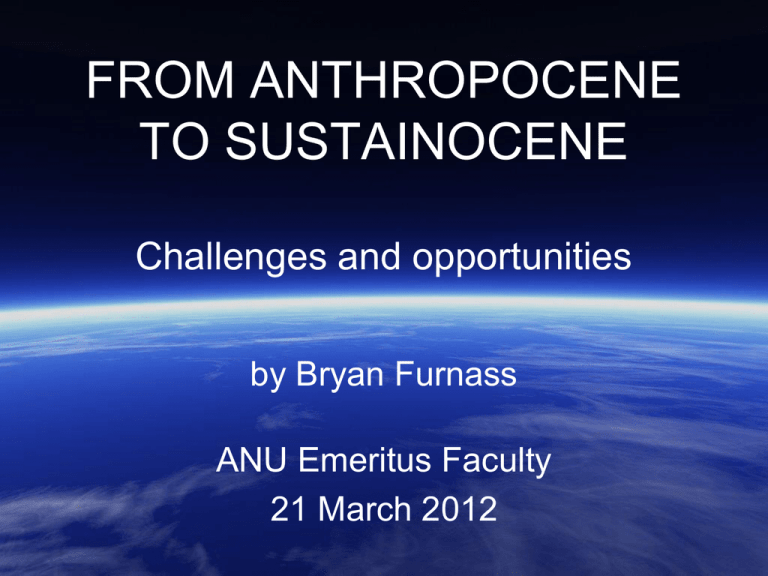
FROM ANTHROPOCENE TO SUSTAINOCENE Challenges and opportunities by Bryan Furnass ANU Emeritus Faculty 21 March 2012 Paul Crutzen (2000) Naming the anthropocene Fig 1 James Watt’s steam engine (1754) Fig 2 Stephenson’s Rocket (1829) 60 kph Fig 3 World Rail Speed Record (France 2007) Fig 4 Svante Arrhenius (1896) Greenhouse gases Fig 5 Greenhouse Gas Emissions CO2 CH4 Fig 6 CARBON COSTS OF ENERGY • POWER SOURCE CO2 in g/kWh • Nuclear 4 • Wind 8 • Large scale hydro 8 • Energy crops 17 • Geothermal 79 • Solar 133 • Gas 430* • Diesel 772 • Oil 828 Fig 7 • Coal 955** (UK Govt’s Energy Technology Support Unit Report, 2008) Fig 8 Human Population Growth Fig 10 Fossil Energy Use Fig 11 Inequalities in the Anthropocene Energy Use Life Expectancy Fig12 History of the Biosphere Fig 13 Stromatolites, Shark Bay, WA Fig 14 Chlorophyll molecule Fig 15 Chlorophyll diagram Fig 16 Fig 17 Fig 18 A Brief History of Homo sapiens Lifestyle Time (years) Generations Hunter-Gatherers * > 200,000 > 8,000 Agriculture (Holocene) ** > 10,000 > 400 > 5,000 > 200 Industry (fossil fuels) **** ( Anthropocene) 250 10 Information Technology ***** 50 2 Sustainocene ??? ****** 25 1 Cities *** Fig19 Hunter-gatherers: evolutionary health principle (Stephen Boyden) This is a file from the Commons. This andWikimedia other from its images atInformation their (Info)Camera 3° 32' 3.46" S, locations description page there is on: 3.53429318;35. location 35° 26' 18.92" E Google Maps shown below. 43859005 Commons is a freely Google Earth licensed media file OpenStreetMap repository. You can help. Fig 20 Health in the Anthropocene •Nutrition •Metabolic syndrome (obesity, etc) •Sugars and refined CHO +++ •Saturated fats ++ •Exercise (Homo sedentarius) •Much reduced in work, transport, recreation Fig 21 Political ‘Triumphs’ of Anthropocene over Sustainocene • • • • • • • • • LARGE COAL SUBSIDIES RISING CO2 EMISSIONS NEW COAL MINES, COAL SEAM GAS FRACKING DEGRADATION OF SOILS AND ECOSYSTEMS DREDGING NEAR GREAT BARRIER REEF CONTINUING DEFORESTATION NEGLECT OF RAIL INFRASTRUCTURE NEGLECT OF RENEWABLE ENERGY POTENTIAL NEGLECTED SUSTAINABLE HOUSING/ AGRICULTURE • UNDERMINING SUPPORT FOR SUSTAINOCENE • DENIALISM Fig 22 “Achievements” of the Anthropocene • • • • • • • • • • SPECIES EXTINCTION : 30,000pa POLLUTION pa:10bt CO2, 121mt N, 10mt P GLOBAL TEMP. RISE ? 4-5oC BY 2100 DESTRUCTION OF SOIL, WATER, ENERGY PEAK FISH: 2004; PEAK OIL: 2006 OCEANIC “DEAD ZONES” >400 ARMS EXPENDITURE $1.6 Tn pa “PEAK OIL” ?? HUMAN POPULATION TO 9 Bn BY 2100 ?? WAITING FOR THE FOUR HORSEMEN Fig 23 Impacts of Anthropocene on Human Health • • • • • • • • • • Advantages Decrease in maternal deaths: doubled life expectancy Generally improved material living standards Improvements in public health, medical care Disadvantages Epidemic - metabolic syndrome of obesity Type 2 diabetes, cardiovascular disorders Emerging infectious diseases, antibiotic resistance Fig 24 Drug and alcohol abuse More cancers, apparent mental and social disorders Effects of global warming (extreme weather events etc.) Impacts of Anthropocene on Human and Planetary Health • Extreme weather events – habitat loss, hyperthermia, stress • Emergence of vector-borne and water-borne diseases • Rioting, warfare for resources • Breakdown of social and material infrastructures • Economic collapse – national, personal Fig 25 The Olduvai Theory of Industrial Civilization Peak Oil c. 1930 c. 2025 Pre-Industrial Phase [c. 3,000,000 BC to 1765] A = Tool making begins (c. 3,000,000 BC) B = Fire use begins (c. 1,000,000 BC) C = Neolithic Agricultural Revolution (c. 8,000 BC) D = Watt's steam engine, 1765 Interval D-E is a transition period. Fig 26 Towards the Sustainocene A TIPPING POINT FOR HOPE From 19th century ancient, dirty, non-renewable solar CAPITAL To 21st century clean renewable solar CURRENCY – a new industrial revolution: Local: Building design and operation (insulation, solar hot water, photovoltaics), biofuels Central: Solar Thermal Electricity (STE): covering 0.5% of deserts with mirrors focused on turbines would meet all electricity needs. Also geothermal; wind; waves; tides Fig 27 Towards the Sustainocene A TIPPING POINT FOR HOPE Transport: From road to rail, from air to windassisted ships; hybrid cars; biofuels from algae and crop wastes, not from food crops or palm oil from cleared forests; Solar or wind generated H2 in fuel cells Agriculture: Cease land clearing; move to organic agriculture for better water retention, less pesticides, herbicides; local food production to reduce transport costs Health: Equity of resources; healthy nutrition; more use of muscle power; adaptation to inevitable global warming (Lovelock) Fig 28 Message from Bhutan for Rio+20 (2012) •Aim for growth in happiness, not GDP •Bhutan’s “Happiness index” top in Asia •Life expectancy doubled in 50 yrs •99% of primary age children in school •Aims 60% of country to remain forested •Aims to preserve rich biodiversity •Bhutan vows to always be a carbon sink •Aims to be 100% organic in agriculture Fig 29 Shortcomings of Bhutan • • • • • • • Bhutan is one of the ‘poorest’ countries 25% of its people live on < $1.25 a day 70% without electricity World’s poorest 20% consume 1% goods Richest 20% consume 86% goods World’s poorest emit 2% GHGs Bhutan has ethnic human rights issues in expelling > 100,000 settlers to refugee camps in Nepal, looked after by UNHCR Fig 30 Mirrors can light up the World Solar Plant in the Mojave Desert, California Fig 31 Solar furnace (French Pyrenees) - 3,800oC Fig 32 Fresnel linear solar collectors Fig 33 Future 177 MW Plant, California (Linear Fresnel Reflector) Fig 34 AREVA Solar Thermal Electricity (Chinchilla,Qld) 250 mW www.solardawn.com.au Fig 35 Solar Dawn – 250 MW (Qld) Fig 36 STE Sustainocene for USA (Mills) • Solar collecting and storage square FOR GRID with 153km sides, would replace 2.3 billion tonnes of CO2 equiv. • Theoretical electrical replacement of entire VEHICLE fuels would save an additional 2.0 bt of CO2 • Replacement of fossil fuel energy for GRID PLUS VEHICLES by STE in USA would save 4.3 bt CO2 = 17% of global emissions reduction required. • Estimated costs for USA to replace static + vehicle loads • Future US $1500 per peak kW = c. $723 bn - $1566 bn capital investment, cf $482 bn pa for imported oil (05-06) • Payback time would be 1.5-3.0 years, with additional environmental, health and global benefits Fig 37 Micro - Sustainocene Fig 38 Agents of the Anthropocene (The Five "Ps") POPULATION POVERTY POLLUTION PROFIT PREPARATION FOR WARFARE Fig 39 Agents of the Sustainocene (The Four "Es") ENLIGHTENMENT ECOLOGY EDUCATION ETHICS Fig 40 The ABC of Enlightenment AWE BEAUTY and CARITAS (Care active responsibility for people and nature) Fig 41 Homo sapiens or Homo hubris? Fig 42 The Cerebral Cortex Contains 1011 neurones. There are 1029 possible inter-connections. The Horsehead Nebula We are children of the universe Fig 43 We are creatures of the biosphere. (one of millions of other species) Fig 44 “Lifesaving Energy” Spelled out by 3,000 Bega residents on Tathra beach Fig 45 “To Our Future” (Translation) Spelled out in Mandarin by Narooma High School students Fig 46 Pandora’s Box "The Creation of "[A]NESIDORA" (Pandora) on a white-ground kylix by the Tarquina Painter, ca. 460 BC. British Museum. A pithos from Crete, ca. 675 BC. Louvre. Fig 47 s Fig 48 Spes or "Hope"; engraving by Sebald Beham, Germany c1540 Fig 49 We must save this planet - It's the only one with chocolate! THANK YOU

